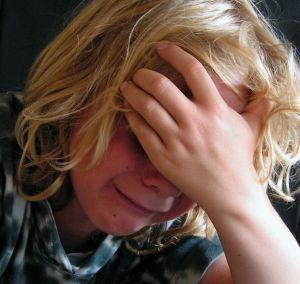 Children who have attachment disorders have spent a significant amount of time thinking about survival. Many children have spent so much time just making it one day to the next that they don’t have the time or energy to even think about how they are feeling. A child with an attachment disorder is usually very out of touch with feelings in general, except for the common feeling of anger.
Children who have attachment disorders have spent a significant amount of time thinking about survival. Many children have spent so much time just making it one day to the next that they don’t have the time or energy to even think about how they are feeling. A child with an attachment disorder is usually very out of touch with feelings in general, except for the common feeling of anger.
A child who is not in touch with their own feelings may not even know when they feel sick. These children are the one’s likely to stand outside in the freezing cold and appear as if they don’t even notice. A child who is unaware of his or her own feelings may fall and get an ouch, and instead of seeking mommy out for a boo-boo kiss they brush it off and continue doing what they were doing.
Some children who have not become in tune with their own feelings may hoard food or overeat until they are sick, because they don’t understand the feeling of being full. In extreme cases, children who have not been able to feel may behave in unsafe or self-hurting ways. Children with sever attachment disorders may pull their own hair or scratch themselves during a tantrum or rage.
Helping a child Learn how to feel is not an easy thing to do. During any moment a situation that creates emotions arises, parents might take advantage of an opportunity to show their child how to feel. When a situation comes up, parents might ask the child, “How did that make you feel?” and in other moments try to share with the child how something makes the parents feel. As the child becomes more aware of their own feelings parents can use other opportunities to talk about how something may have made another person feel.
The important thing is to remember that a child who doesn’t know how to feel needs help. Repetition and constantly going over some of the same lessons learned at early developmental ages can help. The key is that there needs to be a lot of talking and a lot of sharing for a child to learn how to feel and how other people may feel differently then they do.
![]() Some of the side effect behaviors seen in children with attachment disorders are:
Some of the side effect behaviors seen in children with attachment disorders are:
- Side Effects of Attachment Disorders Series Introduction.
- Opposition.
- Control.
- Conscience Development.
- Stealing and Jealousy.
- Thinking errors.
- Anger and Rage.
- Requesting and Meeting the Requests.
- Decision-Making
![]() Special Needs and Adoption-Related Terms:
Special Needs and Adoption-Related Terms:
A | B | C | D | E-F | G-H-I | J-K-L | M | N-O | P | Q-R | S | T-U-V-W-X-Y-Z
For more information about parenting special needs children you might want to visit the Families.com Special Needs Blog and the Mental Health Blog. Or visit my personal website.
Photo credit for this blog entry:  (no use restrictions for this photo)
(no use restrictions for this photo)

